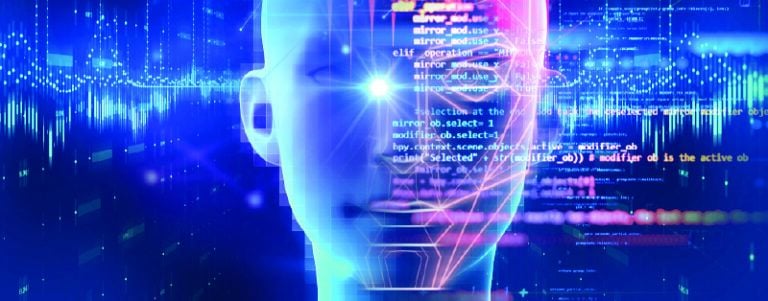What are Convolutional Neural Networks? How are They Helpful?

- How Does the Convolutional Neural Network Differ From Traditional Neural Networks?
- What are the Key Components of a Convolutional Neural Network?
- What are Some Real-World Applications of Convolutional Neural Networks?
- How Can One Get Started With Implementing a Convolutional Neural Network?
- What are the Limitations of Convolutional Neural Networks?
Modern businesses are fueled by quick and efficient data processing. Therefore, many organizations are integrating artificial intelligence and deep learning algorithms to automate data processing and improve their productivity. However, traditional deep learning algorithms face difficulties in analyzing complex data. To circumvent this issue, companies are switching to Convolutional Neural Networks (CNNs) over regular neural networks. Given their rising importance, we take a closer look at the convolutional neural network and its use cases.
How Does the Convolutional Neural Network Differ From Traditional Neural Networks?
Before we get into the differences between the CNN and its traditional counterpart, let’s first understand what the former is. Consider the convolutional neural network as a type of neural network used specifically for image recognition. They can extract data from images, diagrams, or features. Simply put, the convolutional neural network, also called ConvNet, is a type of deep learning algorithm that performs computer vision activities, namely image detection, classification, and segmentation. Moreover, organizations also use a convolutional neural network for object detection, natural language processing, and speech recognition.
It follows a hierarchical layered architecture that resembles the visual cortex in humans.
Convolutional neural networks have more use cases in the modern world because of their image recognition and task-processing abilities. It uses the convolution process, where two signals combine to form a third signal. In the case of image recognition or classification, all image elements are added to their local neighbor.

Here is how CNNs differ from traditional neural networks:
1. Architecture
A convolutional neural network comprises multiple layers such as convolutional layers, pooling layers, and fully connected layers. On the other hand, traditional neural networks are made up of neurons that are connected across different layers.
2. Spatial Hierarchies
Another key difference is that convolutional neural networks identify complex objects by capturing spatial hierarchies in images. However, traditional neural networks cannot capture spatial hierarchies. Therefore, CNNs provide better image and speech recognition.
3. Parameter Sharing
The convolutional layers present in a convolutional neural network apply standard parameters for all inputs. However, the parameter-sharing benefit is not available in traditional neural networks.
ALSO READ: A Detailed Guide on the Meaning, Importance, and Future of Neural Networks
What are the Key Components of a Convolutional Neural Network?
Here are the three core components of a convolutional neural network.
1. Convolution Layers
This is the primary layer of a convolutional neural network, also called the building block. It is responsible for most computation because convolution occurs at this level. For example, if an image is made of different 3D pixels, it will have three attributes—height, breadth, and length. Additionally, the feature detector, also called the kernel or filter, recognizes different patterns. A convolutional neural network can also have an additional convolution later.
2. Pooling Layer
This layer comes next to the convolutional layer. It attracts the significant features from the convolutional matrix to reduce the number of matrices to reduce memory storage. It also comprises a filter and is of two types:
- Max pooling, where the filter moving across the input selects the pixel with the highest value and sends it to the output array
- Average pooling, where the filter calculates the average value of a pixel instead of the selecting pixel with the highest value
3. Fully Connected Layers
This is the last layer that classifies images based on the features extracted from the filter. In the fully connected layers, the nodes in the output layer are connected to the modes in the previous layer.
What are Some Real-World Applications of Convolutional Neural Networks?
If you have understood how convolutional neural networks work, let’s see its use cases:
1. Facial Recognition
This is one of the most popular real-world applications of a convolutional neural network. It can identify faces despite changes in external factors such as light and angle. Therefore, CNNs can be used for biometric purposes by financial institutions and tech companies for integrating facial recognition features into phones.
2. Medical Imaging
CNNs are gaining popularity in the medical industry due to their ability to recognize complex images. Therefore, convolutional neural networks can be used in X-ray software to classify pneumonia. Moreover, they can be beneficial in radiology in detecting cancer. They can also help detect other medical issues, such as glaucoma, heart diseases, and tuberculosis, through complex medical imaging.
3. Document Analysis
CNNs are also beneficial for document analysis. They can identify the text, figures, space, layout, images, and tables in a document. This can help large-scale organizations process data faster. It also reduces the risk of manual error.
4. Self-Driving Cars
Another remarkable use case of CNNs is self-driving cars. This deep learning algorithm enables real-time image recognition, classification, and object detection. Autonomous cars use sensors that provide data to convolutional neural network algorithms. This data is used to analyze the external environment and control the vehicle.
ALSO READ: Top 10 Deep Learning Algorithms to Know in 2024
How Can One Get Started With Implementing a Convolutional Neural Network?
Now that we have discussed a convolutional neural network theoretically, you need to understand its practical implementation to build projects. Let’s examine the broad steps to implement a convolutional neural network in Python with the TensorFlow framework.
1. Install TensorFlow
The first step to implementing a convolutional neural network is to install TensorFlow from pip, a tool to install Python packages. The command to install TensorFlow is:
pip install tensorflow
You can also install other necessary modules, such as NumPy and matplotlib.
2. Download and Prepare the Data Set
The next involves downloading and preparing a dataset for training purposes. You can use 50,000 or more colored images in different classes.
3. Data Verification
Once you have prepared the data set, verify it by plotting some images and adding the class names under each image.
4. Set a Base
Next, use code to create a convolution base that can identify the height, width, and color of the images. Also, dense layers should be added on top to perform image classification.
5. Model Compilation and Training
Once the convolutional neural network architecture is ready, compile the code and train the model by providing specific instructions.
6. Run the Test
Once you have trained the CNN model, run a test by adding more images to check the model’s accuracy.
What are the Limitations of Convolutional Neural Networks?

Even though convolutional neural networks benefit several industries, they also pose certain limitations, making it difficult for organizations to use CNN algorithms.
1. Needs Large Volumes of Labeled Data
One of the biggest drawbacks of convolutional neural networks is that they require large amounts of labeled data for training purposes. Companies might need over 100 million images to train a computational neural network model to ensure output accuracy. Collecting, managing, and processing such data can be difficult for companies.
2. High Computational Costs
Another challenge with a convolutional neural network is the high computational costs. This means that the amount of resources required for training and inference of the algorithm is extremely high. Companies have to incur huge costs for using vast training resources.
3. Interoperability
Interoperability refers to the ability of different computer systems to work together. It is a crucial element in machine learning because it automates processes and enables seamless data flow and quick decision-making. However, convolutional neural networks do not support interoperability and can create friction while operating devices.
ALSO READ: A Complete Guide for Machine Learning
With the increasing application of artificial intelligence and machine learning algorithms across various industries, convolutional neural networks will likely gain more popularity. Therefore, learning CNNs can boost your career. Emeritus’ online artificial intelligence courses and machine learning courses can help you gain advanced deep learning, computer vision, and natural language processing concepts. You can also learn in-demand skills to advance your career in machine learning.
Write to us at content@emeritus.org





